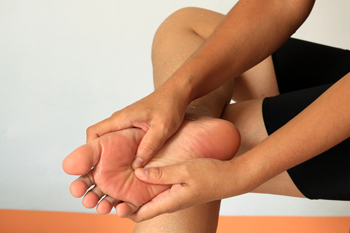 Many people experience several forms of foot pain. This may be a result of spending the majority of the day walking or standing. A common foot ailment is known as athlete’s foot, and is considered to be a fungal infection of the skin. The symptoms that are associated with this condition consist of itching or blisters between the toes, and the soles of the feet may peel and appear red. Wearing shoes that fit poorly is a cause of ingrown toenails, and this condition can produce considerable pain and discomfort. In severe cases, there can be drainage from the toenail which can indicate an existing infection. A bony protrusion on the side of the big toe is indicative of a bunion. A common cause of this is wearing shoes that are too narrow. Additionally, if there is a family history of bunions, the chances of developing this ailment may increase. If you are having any type of foot pain, it is suggested that you schedule a consultation with a podiatrist who can properly treat any foot condition.
Many people experience several forms of foot pain. This may be a result of spending the majority of the day walking or standing. A common foot ailment is known as athlete’s foot, and is considered to be a fungal infection of the skin. The symptoms that are associated with this condition consist of itching or blisters between the toes, and the soles of the feet may peel and appear red. Wearing shoes that fit poorly is a cause of ingrown toenails, and this condition can produce considerable pain and discomfort. In severe cases, there can be drainage from the toenail which can indicate an existing infection. A bony protrusion on the side of the big toe is indicative of a bunion. A common cause of this is wearing shoes that are too narrow. Additionally, if there is a family history of bunions, the chances of developing this ailment may increase. If you are having any type of foot pain, it is suggested that you schedule a consultation with a podiatrist who can properly treat any foot condition.
Foot Pain
Foot pain can be extremely painful and debilitating. If you have a foot pain, consult with Dr. Tina Oliver from Astro Foot Care, PA. Our doctor will assess your condition and provide you with quality foot and ankle treatment.
Causes
Foot pain is a very broad condition that could be caused by one or more ailments. The most common include:
Diagnosis
To figure out the cause of foot pain, podiatrists utilize several different methods. This can range from simple visual inspections and sensation tests to X-rays and MRI scans. Prior medical history, family medical history, and any recent physical traumatic events will all be taken into consideration for a proper diagnosis.
Treatment
Treatment depends upon the cause of the foot pain. Whether it is resting, staying off the foot, or having surgery; podiatrists have a number of treatment options available for foot pain.
If you have any questions, please feel free to contact our office located in Houston, TX. We offer the newest diagnostic and treatment technologies for all your foot care needs.
Read more about Foot Pain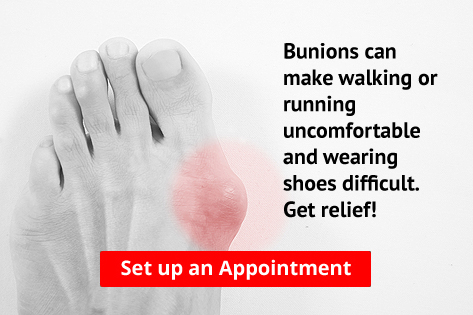
Don't let bunions interfere with your daily activities.
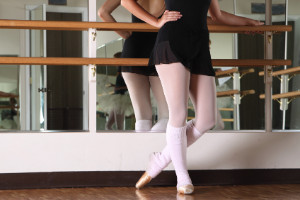 Research has indicated many ballet dancers are afflicted with ingrown toenails. This is often the result of balancing on top of the toes, which can cause the corner of the nail to grow into the surrounding skin. An ingrown toenail typically causes pain and discomfort and may become infected if it is not treated promptly. Many ballet dancers may notice soreness while putting on ballet slippers and pointing the toes can cause extreme pain. Some of the symptoms associated with ingrown toenails can include swelling around the nail, or you may notice a discharge draining from the nail. Mild relief can be found when the toe is soaked in warm water and is helpful in softening the skin around the affected area. If you feel you have an ingrown toenail, consult with a podiatrist so proper treatment can begin.
Research has indicated many ballet dancers are afflicted with ingrown toenails. This is often the result of balancing on top of the toes, which can cause the corner of the nail to grow into the surrounding skin. An ingrown toenail typically causes pain and discomfort and may become infected if it is not treated promptly. Many ballet dancers may notice soreness while putting on ballet slippers and pointing the toes can cause extreme pain. Some of the symptoms associated with ingrown toenails can include swelling around the nail, or you may notice a discharge draining from the nail. Mild relief can be found when the toe is soaked in warm water and is helpful in softening the skin around the affected area. If you feel you have an ingrown toenail, consult with a podiatrist so proper treatment can begin.
Ingrown toenails can become painful if they are not treated properly. For more information about ingrown toenails, contact Dr. Tina Oliver of Astro Foot Care, PA. Our doctor can provide the care you need to keep you pain-free and on your feet.
Ingrown Toenails
Ingrown toenails occur when a toenail grows sideways into the bed of the nail, causing pain, swelling, and possibly infection.
Causes
Prevention
Because ingrown toenails are not something found outside of shoe-wearing cultures, going barefoot as often as possible will decrease the likeliness of developing ingrown toenails. Wearing proper fitting shoes and using proper cutting techniques will also help decrease your risk of developing ingrown toenails.
Treatment
Ingrown toenails are a very treatable foot condition. In minor cases, soaking the affected area in salt or antibacterial soaps will not only help with the ingrown nail itself, but also help prevent any infections from occurring. In more severe cases, surgery is an option. In either case, speaking to your podiatrist about this condition will help you get a better understanding of specific treatment options that are right for you.
If you have any questions please feel free to contact our office located in Houston, TX. We offer the newest diagnostic and treatment technologies for all your foot and ankle needs.
Read more about Ingrown Toenail Care The location of a plantar wart is on the sole of the foot. It often develops in the heel area of the foot and grows into the skin. This is a result of consistent weight that is put on the heel while walking or standing. The fungus that causes this type of wart is known as the human papillomavirus (HPV) and is considered to be contagious. Some of the symptoms that are associated with this condition include a hard and callused area on the heel of the foot, and pain while bearing weight on the foot. Additionally, clotted blood vessels will often appear in the center, which look like tiny black dots. This type of fungus thrives in warm and moist places, which include public swimming pools and surrounding areas, and can easily spread by sharing socks or towels. If you would like information about proper treatment options for a plantar’s wart, please counsel with a podiatrist.
The location of a plantar wart is on the sole of the foot. It often develops in the heel area of the foot and grows into the skin. This is a result of consistent weight that is put on the heel while walking or standing. The fungus that causes this type of wart is known as the human papillomavirus (HPV) and is considered to be contagious. Some of the symptoms that are associated with this condition include a hard and callused area on the heel of the foot, and pain while bearing weight on the foot. Additionally, clotted blood vessels will often appear in the center, which look like tiny black dots. This type of fungus thrives in warm and moist places, which include public swimming pools and surrounding areas, and can easily spread by sharing socks or towels. If you would like information about proper treatment options for a plantar’s wart, please counsel with a podiatrist.
Plantar warts can be very uncomfortable. If you need your feet checked, contact Dr. Tina Oliver from Astro Foot Care, PA. Our doctor will assist you with all of your foot and ankle needs.
About Plantar Warts
Plantar warts are the result of HPV, or human papillomavirus, getting into open wounds on the feet. They are mostly found on the heels or balls of the feet.
While plantar warts are generally harmless, those experiencing excessive pain or those suffering from diabetes or a compromised immune system require immediate medical care. Plantar warts are easily diagnosed, usually through scraping off a bit of rough skin or by getting a biopsy.
Symptoms
Treatment
To help prevent developing plantar warts, avoid walking barefoot over abrasive surfaces that can cause cuts or wounds for HPV to get into. Avoiding direct contact with other warts, as well as not picking or rubbing existing warts, can help prevent the further spread of plantar warts. However, if you think you have developed plantar warts, speak to your podiatrist. He or she can diagnose the warts on your feet and recommend the appropriate treatment options.
If you have any questions please feel free to contact our office located in Houston, TX. We offer the newest diagnostic and treatment technologies for all your foot and ankle needs.
Read more about All About Plantar WartsWhen walking first begins, many children walk with their feet apart, and this is beneficial in maintaining balance. The gap between the feet will gradually close as the walking process is perfected. Additional common foot conditions include flat feet, or you may notice your three year old is walking on tiptoes. Research has indicated the importance of walking barefoot while indoors, and this helps to strengthen the muscles in the feet. When the first shoes are purchased, it is helpful to choose shoes that have laces or buckles. This helps the foot to fit securely in the shoe. Additionally, the toenails must be trimmed correctly, and this is necessary in possibly preventing ingrown toenails from occurring. If you have any questions about the development of your child’s feet, it is suggested to speak to a podiatrist who can properly assist you.
The health of a child’s feet is vital to their overall well-being. If you have any questions regarding foot health, contact Dr. Tina Oliver of Astro Foot Care, PA. Our doctor can provide the care you need to keep you pain-free and on your feet.
Tips for Keeping Children's Feet Healthy
If you have any questions, please feel free to contact our office located in Houston, TX. We offer the newest diagnostic and treatment technologies for all your foot care needs.
Read more about How to Care for Your Child's Feet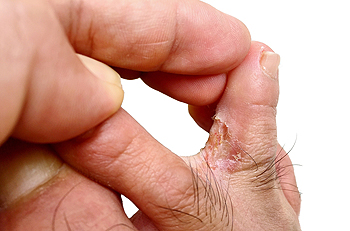 Corns on the feet can be quite painful. They are hard areas of skin, and can develop between the toes, or on the bottom or sides of the feet. Typical symptoms often include pain while wearing shoes, rough or bumpy skin around the affected area, and it may be tender if touched. This foot condition develops as a result of wearing shoes that do not fit correctly, which may cause friction between the toes and the shoe. Mild relief is obtained when the foot is soaked in warm water, and this helps to soften the corn. Wearing a corn pad may lessen the pain, and this may aid in the healing process. If the pain from the corn prevents you from completing daily activities, it is advised that you schedule a consultation with a podiatrist who can implement methods for removal of the corn.
Corns on the feet can be quite painful. They are hard areas of skin, and can develop between the toes, or on the bottom or sides of the feet. Typical symptoms often include pain while wearing shoes, rough or bumpy skin around the affected area, and it may be tender if touched. This foot condition develops as a result of wearing shoes that do not fit correctly, which may cause friction between the toes and the shoe. Mild relief is obtained when the foot is soaked in warm water, and this helps to soften the corn. Wearing a corn pad may lessen the pain, and this may aid in the healing process. If the pain from the corn prevents you from completing daily activities, it is advised that you schedule a consultation with a podiatrist who can implement methods for removal of the corn.
Corns can make walking very painful and should be treated immediately. If you have questions regarding your feet and ankles, contact Dr. Tina Oliver of Astro Foot Care, PA. Our doctor will treat your foot and ankle needs.
Corns: What Are They? And How Do You Get Rid of Them?
Corns are thickened areas on the skin that can become painful. They are caused by excessive pressure and friction on the skin. Corns press into the deeper layers of the skin and are usually round in shape.
Ways to Prevent Corns
There are many ways to get rid of painful corns such as:
Treating Corns
Although most corns slowly disappear when the friction or pressure stops, this isn’t always the case. Consult with your podiatrist to determine the best treatment option for your case of corns.
If you have any questions please feel free to contact our office located in Houston, TX. We offer the newest diagnostic and treatment technologies for all your foot and ankle needs.
Read more about Understanding Corns and Calluses Severely dry skin on the feet may lead to cracked heels. Bleeding, in addition to pain and discomfort can occur as a result of this ailment. Other symptoms may include hard, yellowed skin, and the skin may appear flaky as well. There are several reasons why cracked heels may develop. These can include standing for extended periods of time for the majority of the day, wearing shoes that have an open back, or having an existing medical conditions such as flat feet or a thyroid disorder. Mild relief may be found when the feet are washed and dried thoroughly, followed by utilizing a good moisturizer. If the pain becomes severe, it is suggested that you seek the counsel of a podiatrist who can properly treat this condition.
Severely dry skin on the feet may lead to cracked heels. Bleeding, in addition to pain and discomfort can occur as a result of this ailment. Other symptoms may include hard, yellowed skin, and the skin may appear flaky as well. There are several reasons why cracked heels may develop. These can include standing for extended periods of time for the majority of the day, wearing shoes that have an open back, or having an existing medical conditions such as flat feet or a thyroid disorder. Mild relief may be found when the feet are washed and dried thoroughly, followed by utilizing a good moisturizer. If the pain becomes severe, it is suggested that you seek the counsel of a podiatrist who can properly treat this condition.
If the skin on your feet starts to crack, you may want to see a podiatrist to find treatment. If you have any concerns, contact Dr. Tina Oliver from Astro Foot Care, PA. Our doctor can provide the care you need to keep you pain-free and on your feet.
Cracked Heels
It is important to moisturize your cracked heels in order to prevent pain, bleeding, and infection. The reason cracked heels form is because the skin on the foot is too dry to support the immense pressure placed on them. When the foot expands, the dry skin on the foot begins to split.
Ways to Help Heal Them
Ways to Prevent Cracked Heels
If you are unsure how to proceed in treating cracked heels, seek guidance from a podiatrist. Your doctor will help you with any questions or information you may need.
If you have any questions, please feel free to contact our office located in Houston, TX. We offer the newest diagnostic and treatment technologies for all your foot care needs.
Read more about Solutions for Cracked Heels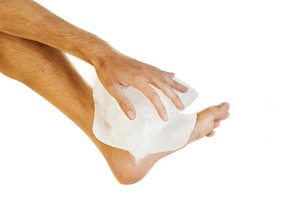 Consistent overuse of the muscles in the foot often produces a condition that is known as a stress fracture. Repeated impact that comes from running or jumping activities can cause the muscles to lose shock absorption, and the result may be a small fracture in the bone. It is possible that stress fractures can be prevented when the feet are strong. This can be accomplished by incorporating a healthy diet into your lifestyle, wearing shoes that fit correctly, and gradually increasing the power of your workout. The symptoms that are associated with stress fractures include pain while walking or completing daily activities, tenderness if the foot is touched, or possible bruising. If you feel you have a stress fracture, it is suggested to consult with a podiatrist who can guide you toward proper treatment options.
Consistent overuse of the muscles in the foot often produces a condition that is known as a stress fracture. Repeated impact that comes from running or jumping activities can cause the muscles to lose shock absorption, and the result may be a small fracture in the bone. It is possible that stress fractures can be prevented when the feet are strong. This can be accomplished by incorporating a healthy diet into your lifestyle, wearing shoes that fit correctly, and gradually increasing the power of your workout. The symptoms that are associated with stress fractures include pain while walking or completing daily activities, tenderness if the foot is touched, or possible bruising. If you feel you have a stress fracture, it is suggested to consult with a podiatrist who can guide you toward proper treatment options.
Activities where too much pressure is put on the feet can cause stress fractures. To learn more, contact Dr. Tina Oliver from Astro Foot Care, PA. Our doctor can provide the care you need to keep your pain free and on your feet.
Dealing with Stress Fractures of the Foot and Ankle
Stress fractures occur in the foot and ankle when muscles in these areas weaken from too much or too little use. The feet and ankles then lose support when walking or running from the impact of the ground. Since there is no protection, the bones receive the full impact of each step. Stress on the feet can cause cracks to form in the bones, thus creating stress fractures.
What Are Stress Fractures?
Stress fractures occur frequently in individuals whose daily activities cause great impact on the feet and ankles. Stress factors are most common among:
Symptoms
Pain from the fractures occur in the area of the fractures and can be constant or intermittent. It will often cause sharp or dull pain with swelling and tenderness. Engaging in any kind of activity which involves high impact will aggravate pain.
If you have any questions please feel free to contact our office located in Houston, TX. We offer the newest diagnostic and treatment technologies for all your foot and ankle needs.
Read more about Dealing with Stress Fractures of the Foot and Ankle If your middle toe is bent in a downward position, you may have a condition that is known as hammertoe. The shape of the toe may resemble a hammer, and wearing shoes may be uncomfortable. Some of the symptoms that are associated with this condition include corns or calluses that form on top of the toe and pain that is felt when the toe is straightened. Hammertoe may develop as a result of wearing shoes that do not have adequate room in the toe area, causing the toes to be in a cramped position for the majority of the day. Medical conditions such as arthritis or diabetes may be responsible for the formation of hammertoes, in addition to genetic factors. If you believe that you have a hammertoe, schedule a consultation with a podiatrist who can properly diagnose and treat this condition.
If your middle toe is bent in a downward position, you may have a condition that is known as hammertoe. The shape of the toe may resemble a hammer, and wearing shoes may be uncomfortable. Some of the symptoms that are associated with this condition include corns or calluses that form on top of the toe and pain that is felt when the toe is straightened. Hammertoe may develop as a result of wearing shoes that do not have adequate room in the toe area, causing the toes to be in a cramped position for the majority of the day. Medical conditions such as arthritis or diabetes may be responsible for the formation of hammertoes, in addition to genetic factors. If you believe that you have a hammertoe, schedule a consultation with a podiatrist who can properly diagnose and treat this condition.
Hammertoes can be a painful condition to live with. For more information, contact Dr. Tina Oliver of Astro Foot Care, PA. Our doctor will answer any of your foot- and ankle-related questions.
Hammertoe
Hammertoe is a foot deformity that occurs due to an imbalance in the muscles, tendons, or ligaments that normally hold the toe straight. It can be caused by the type of shoes you wear, your foot structure, trauma, and certain disease processes.
Symptoms
Risk Factors
Treatment
If you have hammertoe, you should change into a more comfortable shoe that provides enough room for your toes. Exercises such as picking up marbles may strengthen and stretch your toe muscles. Nevertheless, it is important to seek assistance from a podiatrist in order to determine the severity of your hammertoe and see which treatment option will work best for you.
If you have any questions, please feel free to contact our office located in Houston, TX. We offer the newest diagnostic and treatment technologies for all your foot care needs.
Read more about Hammertoe